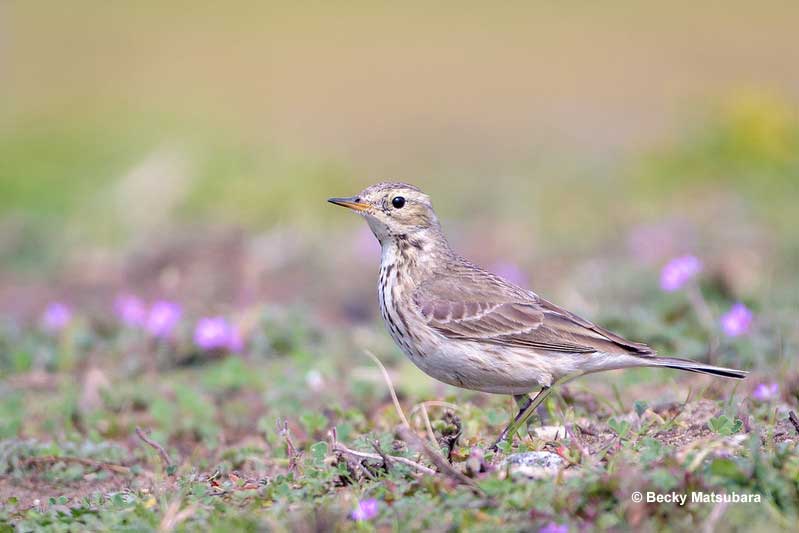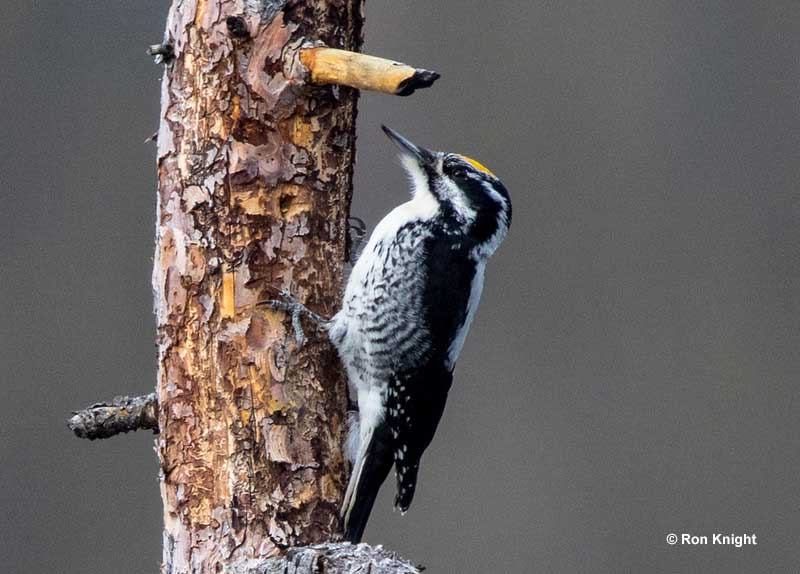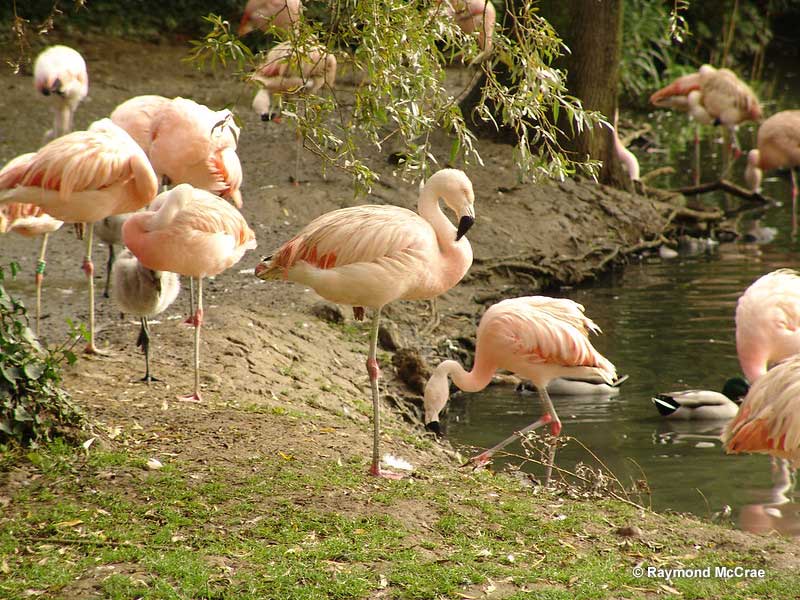
Bird names can be as fun as the birds themselves! Some are named after people, others after regions. A lot of bird names can point to colors, and some hint at special behaviors.
Have you wondered about bird names? Why and how did they get their common names?
See this article to learn all about the birds with names that start with the letter “A”!
On this page
- Bird Names Starting With A
- Abert’s Towhee
- Acadian Flycatcher
- Acorn Woodpecker
- Alder Flycatcher
- Allen’s Hummingbird
- Altamira Oriole
- American Avocet
- American Bittern
- American Black Duck
- American Coot
- American Crow
- American Dipper
- American Flamingo
- American Golden-Plover
- American Goldfinch
- American Kestrel
- American Oystercatcher
- American Pipit
- American Redstart
- American Robin
- American Three-toed Woodpecker
- American Tree Sparrows
- American White Pelican
- American Wigeon
- American Woodcock
- Anhinga
- Anna’s Hummingbird
- Arctic Tern
- Arizona Woodpecker
- Ash-Throated Flycatcher
- Atlantic Puffin
- Audubon’s Oriole
- Extras: Bird Families Starting With A
Bird Names Starting With A
Alphabetical lists are always fun, especially when you get to start from the beginning. With over 30 bird names that start with A, the following list is bound to keep you intrigued!
Abert’s Towhee
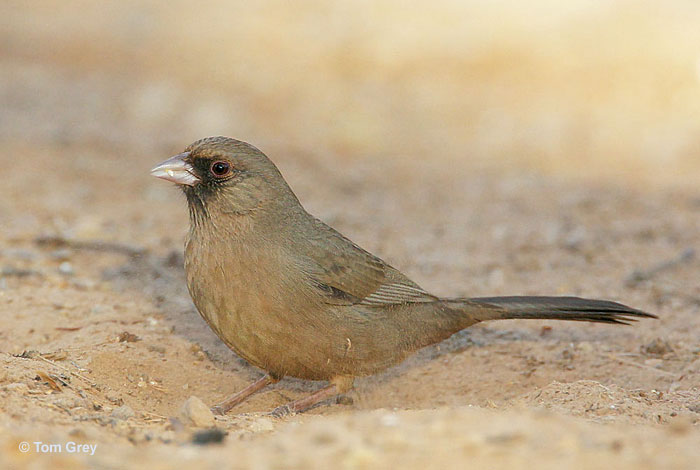
Abert’s Towhees are true desert birds that only live in Arizona and a few other areas. This bird was named after Lt. James William Abert, an ornithologist who participated in army expeditions in western North America during the 1800s.
If we based its name on behavior and appearance, this bird could easily be called the “Desert River Towhee” or “Sooty-faced Towhee.”
These members of the sparrow family are especially common in arid vegetation that grows along rivers and dry stream beds. We often find Abert’s Towhees after hearing them scratch in leaf litter for bugs and seeds. They can also visit feeders!
Acadian Flycatcher
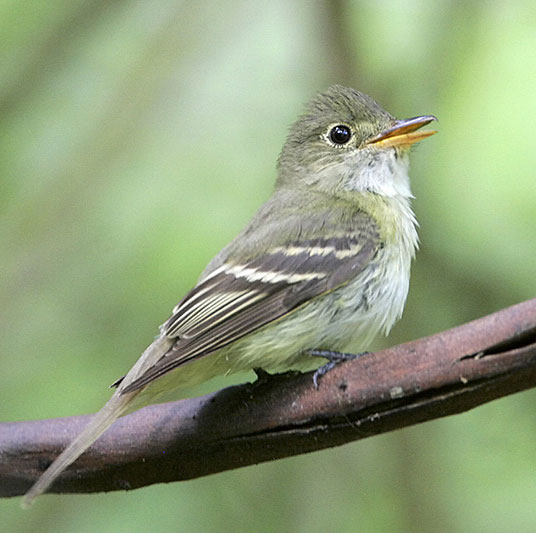
The Acadian Flycatcher is named after an area where it doesn’t actually live! The confusion began when the first Empidonax flycatcher species was described from the Acadian region of Nova Scotia.
At that time, since Empidonax flycatchers look so similar, they were all considered to be the same species. Since then, for the most part, ornithologists have figured out which Empidonax (“Empids”) are species. However, the Acadian stayed with the original name given to this similar group of birds.
You probably won’t find Acadian Flycatchers in Nova Scotia but you might see them in summer woodlands of the eastern USA.
Acorn Woodpecker
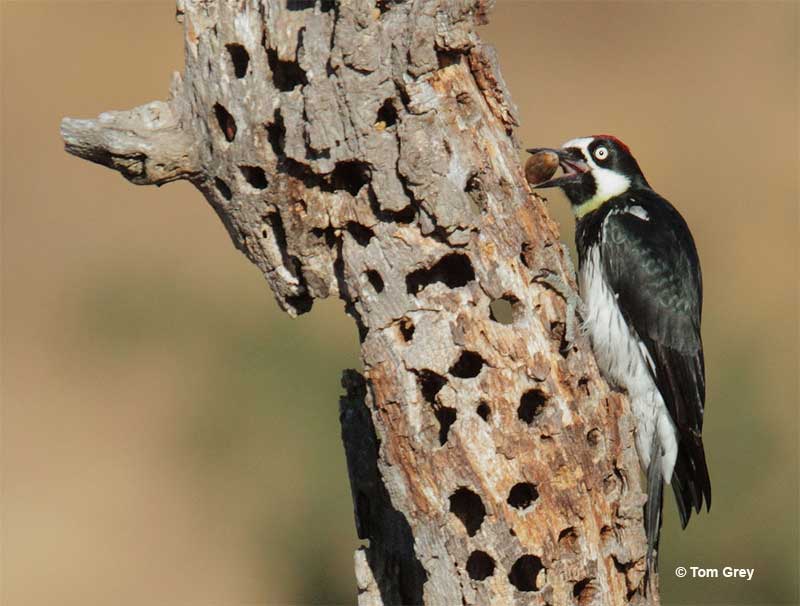
Acorn Woodpeckers are named after their main food source. While some birds have names that don’t seem to fit, it’s hard to think of a better name for this fun woodpecker.
In the western USA, family groups of these beautiful woodpeckers spend a lot of their time collecting and storing acorns. The industrious birds make small holes in trees and wooden structures and fill them with acorns, sometimes thousands of them!
When not collecting acorns, small family groups of this woodpecker species can visit feeders and sally from perches to catch insects in flight. They always entertain with clownish faces and laughter-like calls!
Alder Flycatcher
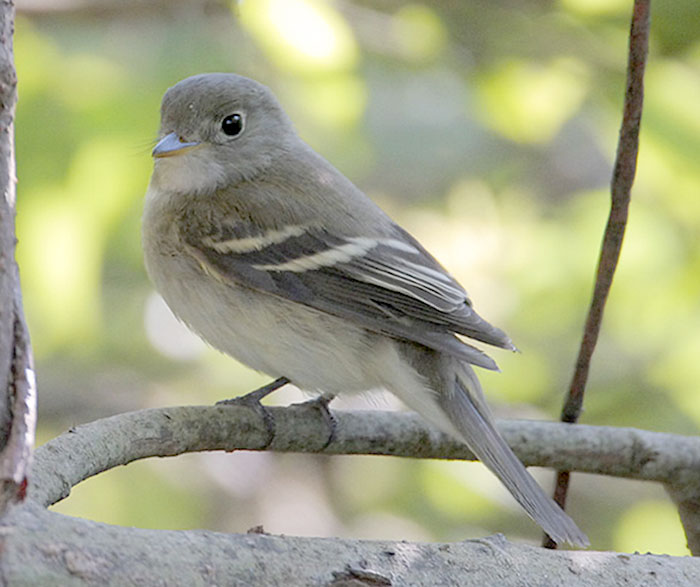
The Alder Flycatcher is another “Empid” that was long overlooked as a species. Up until 1973, this and the extremely similar Willow Flycatcher were both known as the “Traill’s Flycatcher”.
However, an ornithologist from New York state eventually realized that they sounded different and also differed in some other subtle ways. Based on those factors, the Traill’s Flycatcher was separated into two species.
Each was named after habitats they often frequented. In the case of the Alder Flycatcher, true to its name, this flycatcher likes to breed in wet Alder thickets in Canada, Alaska, parts of the northeastern USA, and the Appalachians.
Allen’s Hummingbird
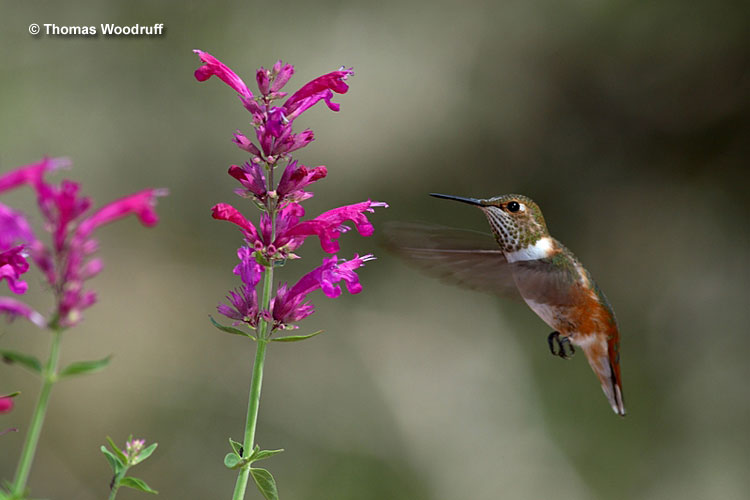
This beautiful hummingbird was named after the first ornithologist who noted that this bird was different enough to be considered a valid species.
While working in Nicasio, California in 1879, Charles Andrew Allen realized that the bird’s green back differentiated it from the similar Rufous Hummingbird.
It’s no surprise that Allen saw this little beauty in California. This hummingbird species only breeds in foggy coastal habitats from Oregon to California. Like other hummingbirds, they zip between flowers to drink nectar, catch small bugs in flight, and visit hummingbird feeders.
After breeding, Allen’s Hummingbirds migrate to the highlands of central Mexico.
Altamira Oriole
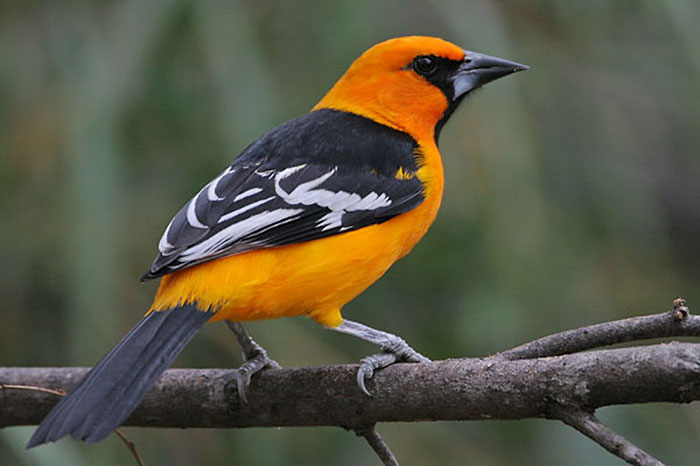
The Altamira Oriole used to go by a different name. Look in some old field guides and don’t be surprised to see the “Lichtenstein’s Oriole”. This was the name given to this beautiful oriole species in honor of Herman natural historian, Martin Hinrich Carl Lichtenstein.
This name was also used during part of the 20th century but was eventually changed to “Altamira Oriole”. No one really knows why this name was eventually used but this big, boldly plumaged oriole mostly lives in Mexico and Central America. With that in mind, “Altamira” seems more fitting than “Lichtenstein”.
“Altamira” can be translated to “high view” or “look up.”
American Avocet
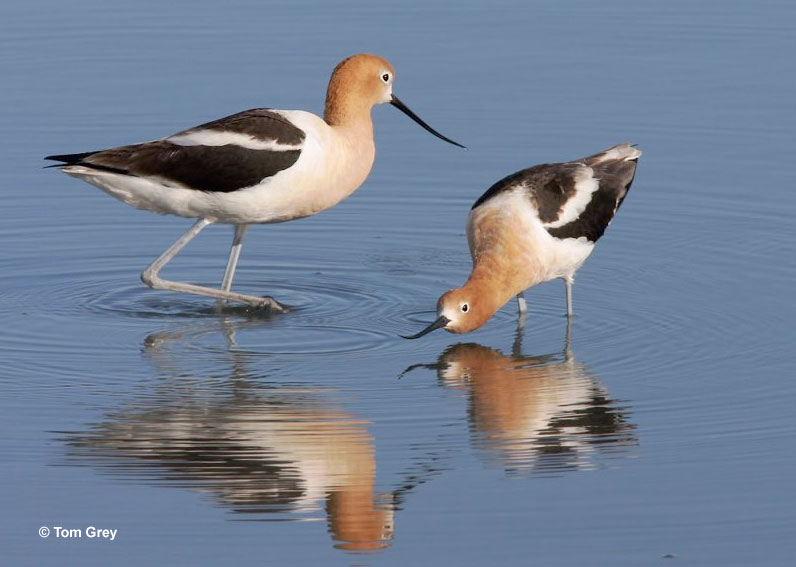
American Avocets get their name from where they occur. There are four species of avocets in the world but only one lives in North America; the American Avocet.
The other part of their name, “avocet”, is also unique. This word is an English version of “avosetta”, an Italian name for the avocet species that lives in Europe.
Avocet is a good name for these graceful birds. It’s a word that evokes elegance, one of the principal attributes of these lovely waders.
American Avocets like to frequent shallow, briny waters where they use their long, upturned beaks to catch small aquatic creatures.
American Bittern
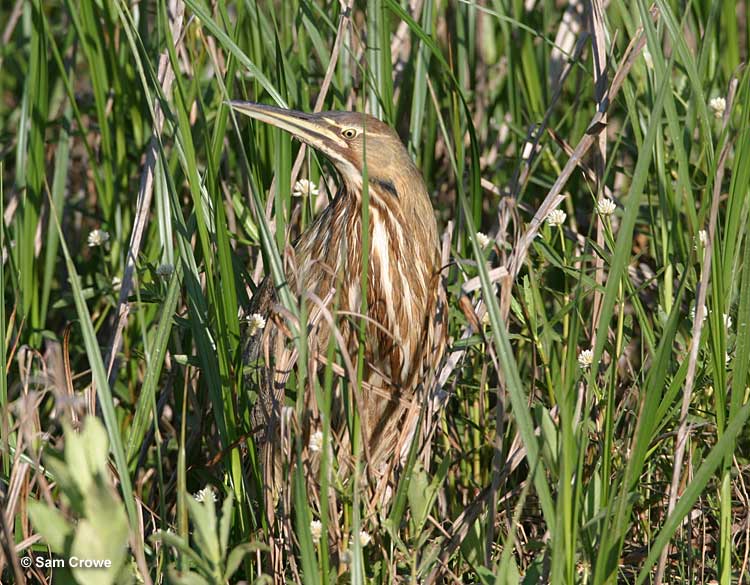
The American Bittern is also named for its place of occurrence. There are four species of large bitterns in the world, but only one, the American Bittern, lives in North America.
When Europeans arrived in North America, they referred to the American Bittern as a “bittern” because it reminded them of a bird they knew from Europe, the Great Bittern.
Both those species do look similar and also have similar habits. In general, we see American Bitterns lurking in dense freshwater marshes and similar wetland habitats.
The word “bittern” stems from an old French-Roman word that means “bull buzzard”, and refers to the bittern’s stocky appearance.
American Black Duck
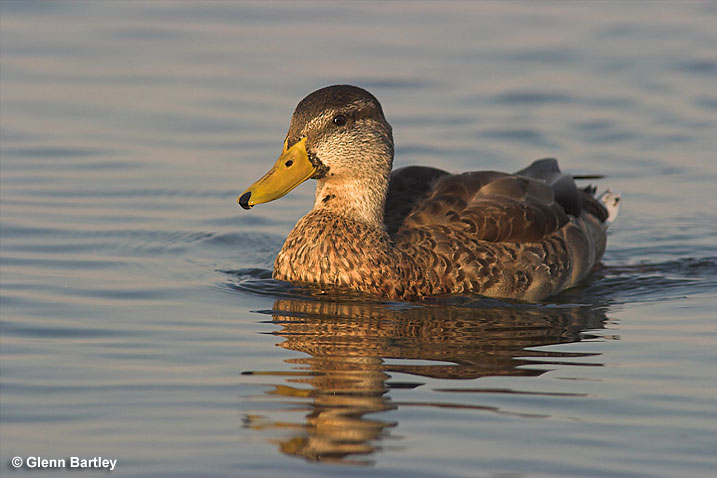
American Black Ducks are named after their place of occurrence and appearance. True to their name, these big ducks only live in North America. In fact, American Black Ducks only occur in the eastern parts of Canada and the USA.
They used to just be known as “Black Ducks” but “American” was added to differentiate them from two other species, the African Black Duck, and the Pacific Black Duck.
Like their name says, these ducks have noticeably dark plumage. Although it’s not exactly black, they look much darker than the Mallard and other similar duck species. We usually see them dabbling in northern marshes.
American Coot
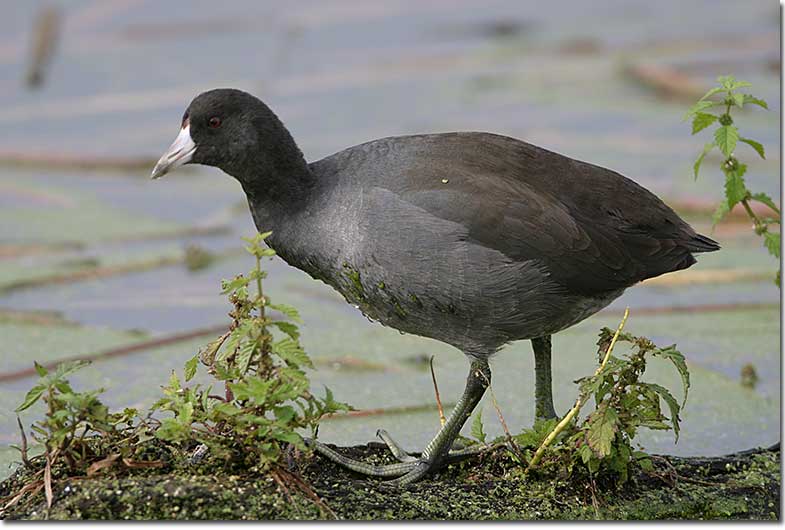
American Coots are named after the region where they live, and a name used for the similar and related Eurasian Coot. We only find American Coots in North America, and often see them in marshes and on lakes.
These waterbirds float around like ducks as they pick small bugs off the top of the water.
The word “coot” seems to be a derivation of an old English word that was used for various aquatic diving birds.
Oddly enough, “coot” is also sometimes used to describe an old, bald guy. This stems from the bright white frontal shields that coots have on their heads!
American Crow

Like most birds with “American” in their name, American Crows are named after their place of occurrence. They are common but they only live in North America. When Europeans colonists arrived in New England, they surely recognized American Crows as some type of crow right away.
They would have been familiar with the similar Carrion Crow from western Europe, and probably just referred to American Crows as “crows”.
Eventually, ornithologists realized that American Crows were a distinct, separate species from the Carrion Crow and gave the bird its current name.
The word “crow” comes from old English and German, and is based on the cawing noises that crows make.
American Dipper
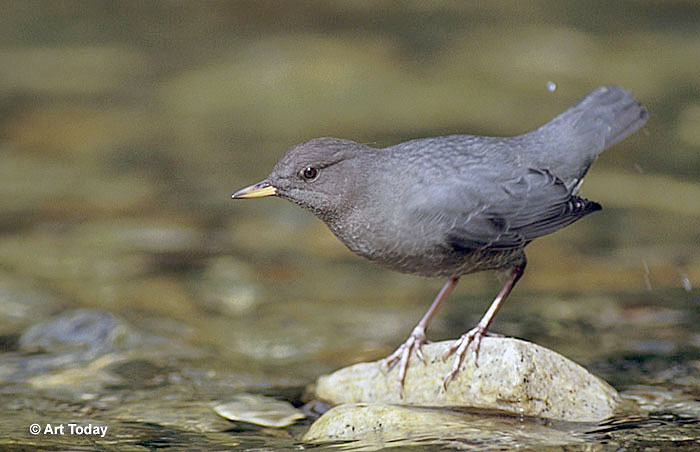
American Dippers are named after the part of the world where we see them, and their behavior. This species is the only dipper species that lives in North America. We find them in cold mountain rivers and streams in western states and provinces, and yes, they dip!
Like the other four dipper species, American Dippers often “dip” or quickly lower and raise their bodies as they stand on wet river rocks. To forage, they dip below the water surface and even walk on the river bottom.
The first “dipper” species to get that name was the White-throated Dipper, a well-known European counterpart of the American Dipper.
American Flamingo
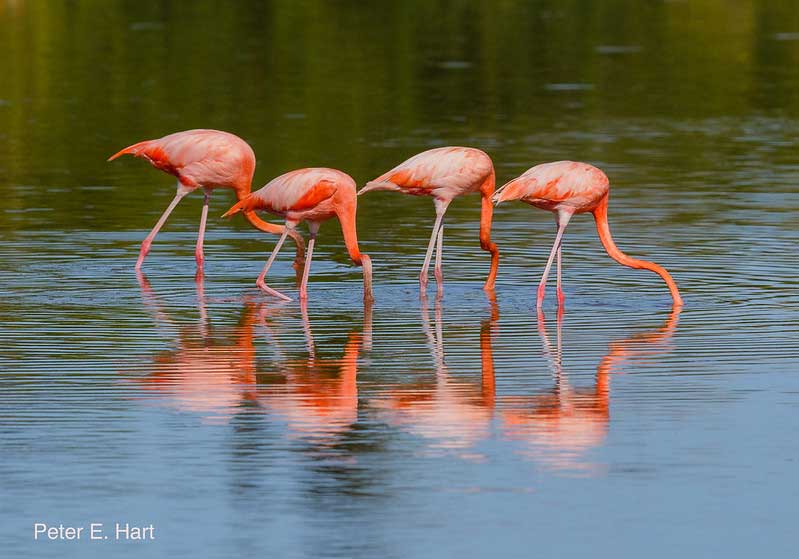
American Flamingos are the only flamingo species that live in North America. Since the other five flamingo species live in South America, Eurasia, and Africa, “American Flamingo” seems to be a fair name for it.
However, a better name would be Caribbean Flamingo. Although several stray flamingos did wander to various parts of the USA in 2023, American Flamingos mostly live in the Caribbean region.
Small numbers occur in southern Florida and a population also lives on the Galapagos Islands. These fancy birds wade in shallow, salty water to forage for tiny shrimp.
The flamingo part of their name comes from a Spanish term that means “flame-colored.”
American Golden-Plover
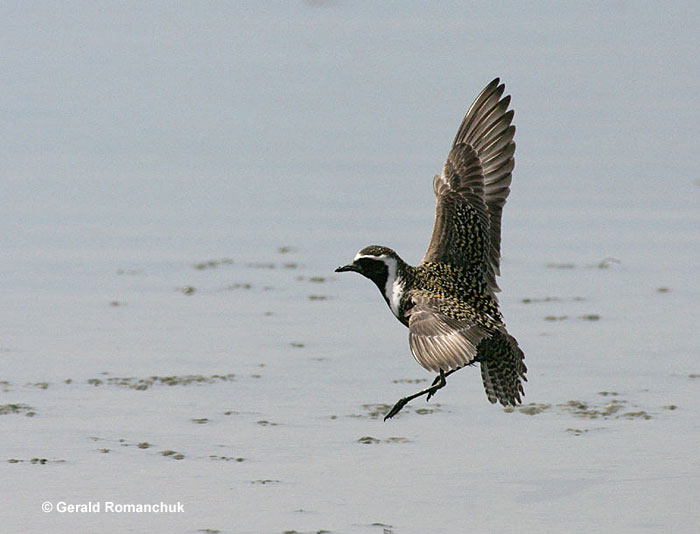
American Golden-Plovers are one of the three species of golden-plovers. One of those is the original “Golden Plover”, the European Golden-Plover.
This bird species is named after its yellowish upperparts. All three breed in northern tundra but only one, the American Golden-Plover, nests in northern Canada and Alaska.
It’s also the typical golden-plover species seen on migration in North America. During migration, we usually see this pretty shorebird in big, open, bare farm fields and other habitats with short grass.
Like the other two golden-plover species, in breeding plumage, the American Golden-Plover has beautiful golden mottling on its upperparts.
American Goldfinch

American Goldfinches have a fitting, perfect name. They only live in North America and are a common bird of open meadows. A lot of folks also know these pretty birds from their backyard feeders.
Most of all, male American Goldfinches have beautiful bright yellow or golden plumage. They lose those colors in the winter but still have yellowish feathers that live up to their name.
Although American Goldfinches have beautiful golden colors, they were also named after a related species, the European Goldfinch. This small bird with golden flashes in its wings has been well known and appreciated by Europeans for centuries.
American Kestrel
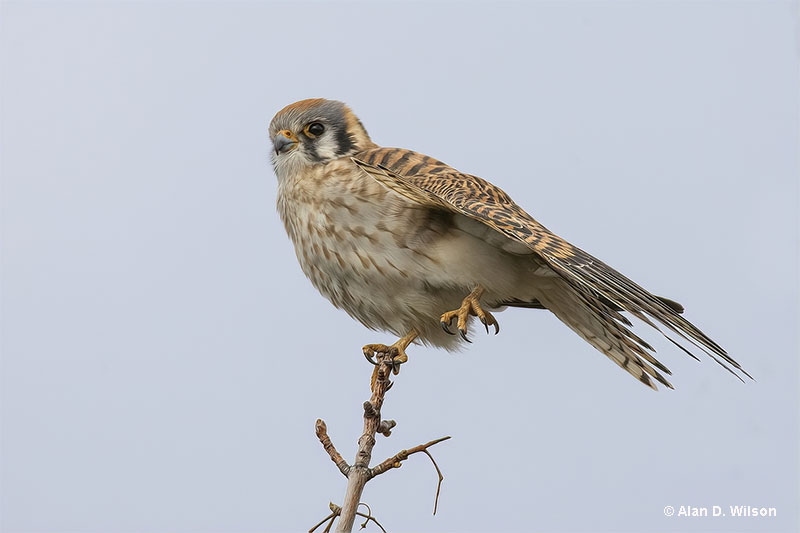
The American Kestrel is a beautiful little falcon that only lives in the Americas. Although it’s a familiar species of meadows and grassland habitats in North America, American Kestrels also live in the Caribbean and parts of South America.
We often see this little falcon perched on roadside wires or hovering over open fields. Several other kestrel species occur in Eurasia, Africa, and Australia and all have similar behaviors.
The word “kestrel” comes from an old French word and might be related to the “killy killy” sounds that kestrels make. This would have been first used for the Eurasian Kestrel and then applied to similar, related species.
American Oystercatcher
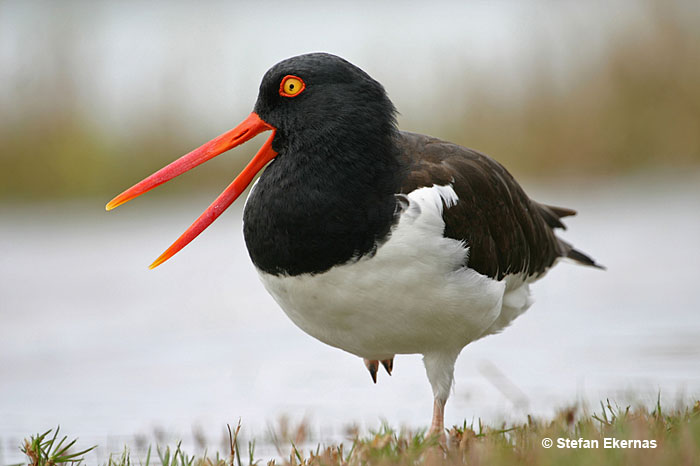
American Oystercatchers are plump, black and white shorebirds that only live on shorelines of North and South America. Like a lot of birds with “American” in their name, they are the American counterpart of a similar, related species that lives in Europe.
In this case, that bird is the Eurasian Oystercatcher, a bird species that does indeed feed on oysters. When it finds an oyster or clam, it sticks its long, laterally flat bill into the mollusk and uses it like a knife to open the shell.
American Oystercatchers do the same thing, look like the Eurasian Oystercatcher, and were thus named after that bird.
American Pipit
The American Pipit is one of two breeding pipit species in North America. It used to be known as the “Water Pipit” but had its named changed after ornithologists realized that American Pipits were a separate species from the Water Pipits of northern Eurasia.
The “pipit” part of its name stems from this name being used for various members of the pipit and wagtail family that live in Eurasia. These birds are called “pipits” because of the way that many pipit species fly, and also because of their calls.
Several pipit species have undulating flight patterns and make calls that sounds a bit like “pip it!”.
American Redstart
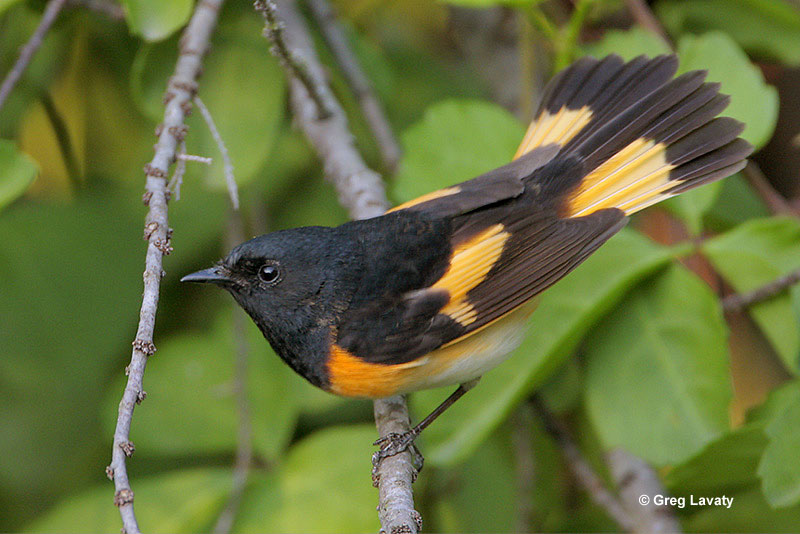
American Redstarts got their name from the first Europeans who came to North America. They saw the striking black and orange plumage of male American Redstarts and were reminded of a pretty bird they knew from Europe; the Common Redstart.
Although those two bird species are in different families, like the American Redstart, the Common Redstart also has black on its face and beautiful reddish-orange colors on its chest, flanks, and tail.
That original redstart was named after those pretty reddish colors, and the bird’s habit of flicking its tail and fluttering after insects. American Redstarts have similar insect catching habits.
American Robin
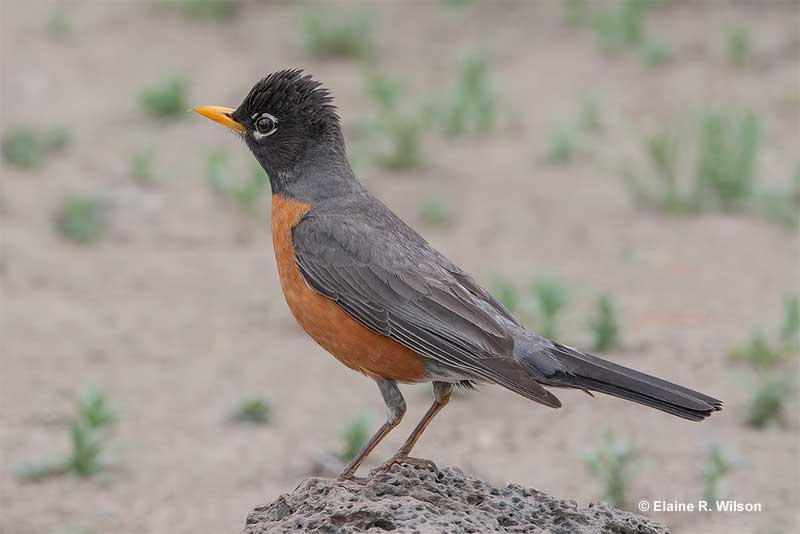
The American Robin is a beautiful and familiar bird named after a smaller species from another family. That other bird is the European Robin, a cute little chat that lives in gardens, parks, and other wooded habitats in Europe and northern Africa.
Like the American Robin, it’s a common and familiar bird species with an orange breast. When the Europeans came to North America, the big thrushes with brick red underparts reminded them of “The Robin” they were already familiar with.
So, they ended up calling these North American thrushes the “American Robin”. The word “robin” might be a nickname for “redbreast”, another name for the European Robin.
American Three-toed Woodpecker
The American Three-toed Woodpecker used to be known as the “Three-toed Woodpecker”. However, ornithologists eventually realized that the Three-toed Woodpeckers in Eurasia were a different species from the ones in North America.
The birds were split into two species and since the ones that lived in North America only occurred on this continent, they got the name, “American Three-toed Woodpecker”.
As their name indicates, they do have three toes! Like other woodpeckers, they use their feet to hitch up trunks and feed on beetles and other bugs. These uncommon woodpeckers only live in montane and boreal coniferous forests. We often find them in burned areas.
American Tree Sparrows
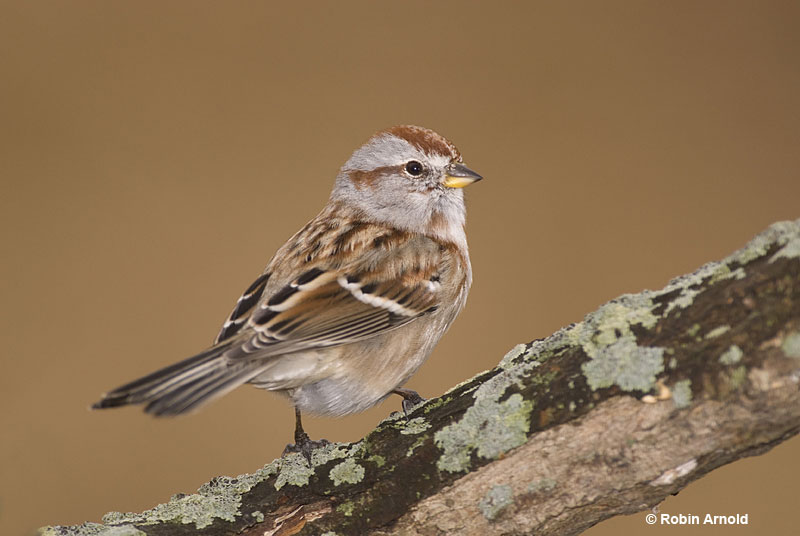
The American Tree Sparrow has a truly misleading name. Since there is a Eurasian Tree Sparrow, you might think the American one looks like it. However, the two species don’t resemble each other at all!
Based on its name, you might also assume that the best place to look for American Tree Sparrows is up in the trees. This is also false. American Tree Sparrows breed in northern, subarctic brushy habitats, and winter in weedy fields and second growth.
Although they can perch in low trees, we usually see flocks foraging on the snowy ground. These lovely birds also come to feeders and sing pretty songs in late winter.
American White Pelican
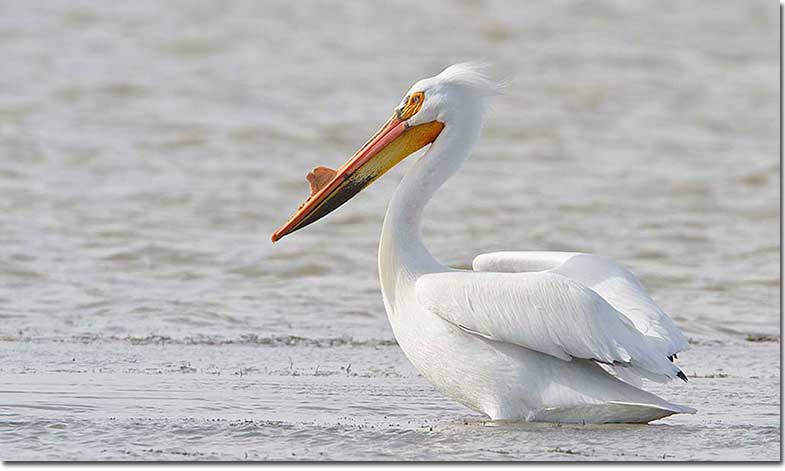
The American White Pelican is a huge bird with a good name. This big aquatic bird has white plumage with black flight feathers, and only lives in North America.
It could easily be called the “White Pelican” but since there are also similar white pelican species in other parts of the world, it has “American” as part of its name.
American White Pelicans forage for fish in shallow marshes and lakes, mostly in central and western North America. They are very social and often form big flocks that feed together. In migration, we can also see flocks of these majestic birds soaring overhead in big circles.
American Wigeon
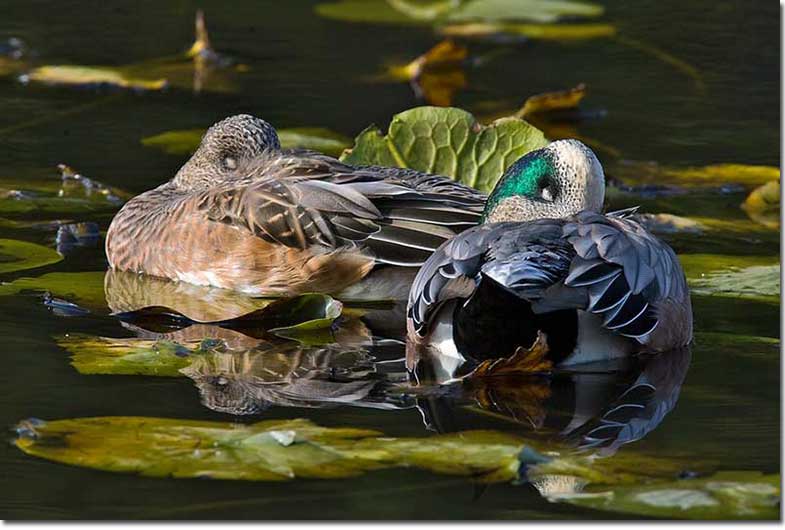
The American Wigeon is named after a similar duck species that lives in Eurasian, the Eurasian Wigeon. Although the two species have different colored plumage, when Europeans saw the American Wigeon, they immediately recognized that it was a type of wigeon.
One of their first names for it was also the “Baldpate”, a name in reference to this duck’s bright white crown. The wigeon part of its name has unknown origins. It seems to be an old word that may have been invented to refer to the Eurasian Wigeon. It might also be a word related to the odd, whistle-like sounds that wigeons make.
American Woodcock
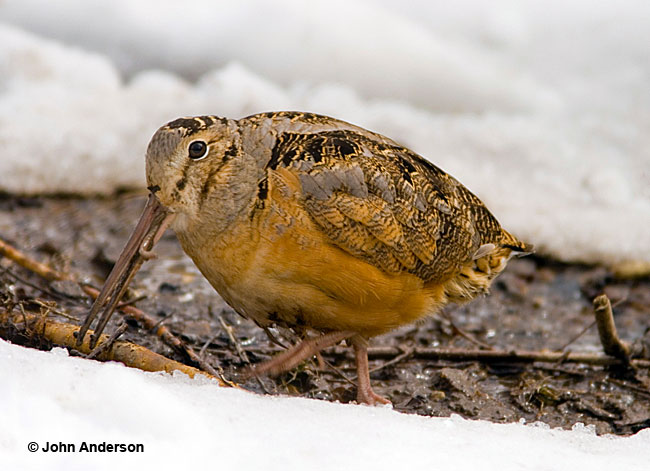
The American Woodcock is a type of terrestrial shorebird. It’s related to a similar rotund shorebird species that lives in Eurasia; the Eurasian Woodcock.
That bird species has that name because it lives in woodlands and has a rounded shape sort of like a chicken or “cock” (an old name for a chicken or many types of birds).
When Europeans arrived to North America, they encountered American Woodcocks and immediately recognized them as similar to the woodcocks from Europe.
American Woodcocks live in damp second growth and forest. They use their long beaks to probe into damp ground for worms and other bugs.
Anhinga
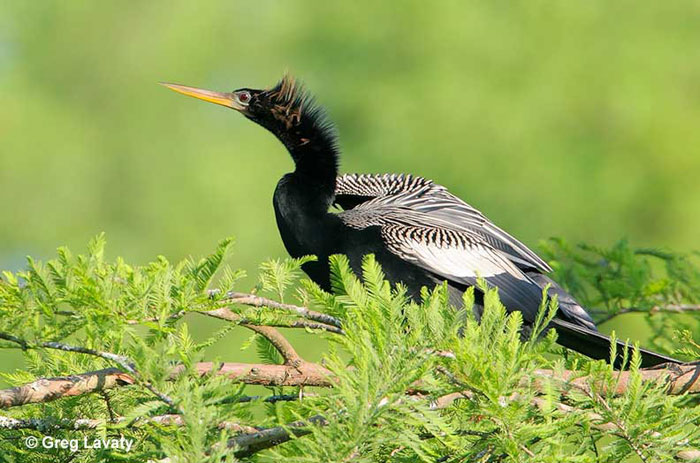
The Anhinga has one of the more unique names for a North American bird. This is because “Anhinga” comes from Tupi, a language that used to be spoken in southern Brazil.
Other animals from Brazil with Tupi names include toucans, tanagers, and Jaguars. When Europeans gave these birds scientific descriptions, they continued to use the same common names used by Tupi speakers.
In Tupi, “Anhinga” means the same thing as another English name for this bird; “Snakebird”. This stems from the aquatic bird’s long, snake-like neck. Yet another name for the Anhinga is Water Turkey. Look at an Anhinga’s tail and you can see why it gets this name!
Anna’s Hummingbird
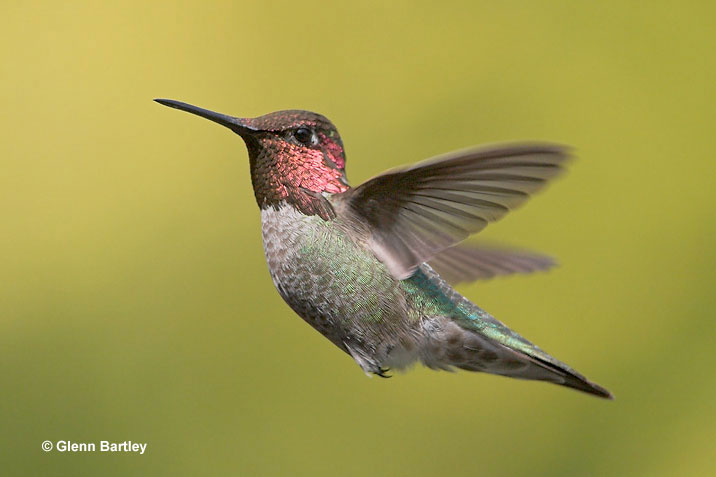
This beautiful hummingbird of the west coast is named after a lady in waiting for a French empress from the late 19th century. This odd occurrence happened when French naturalist Rene Lesson described the Anna’s Hummingbird for science in 1829.
He named it “Anna’s” to honor Anne d’Essling, the wife of a French ornithologist who also happened to be a recognized Duke.
Related: Bird names that start with N
If we could give the Anna’s Hummingbird a new name, a good one might be “Pink-headed Hummingbird”, or Rose-headed Hummingbird”. That would reflect the beautiful colors on the male’s head.
Like other hummingbird species, this one visits feeders and feeds from flowering bushes.
Arctic Tern
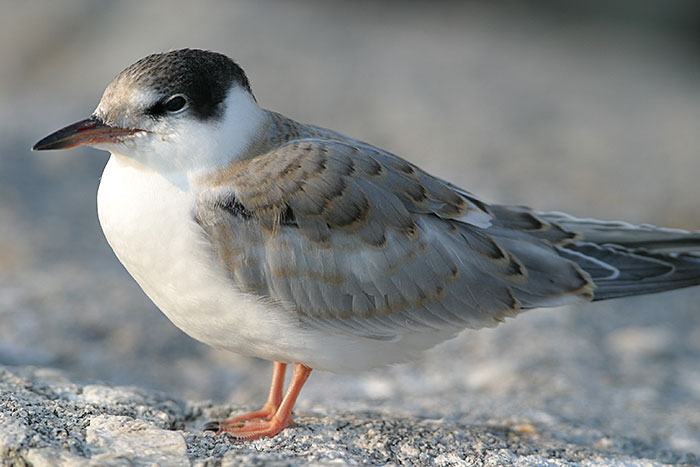
The Arctic Tern is named after its breeding grounds. Although some of these elegant “sea swallows” breed in Maine and other temperate zone regions, most do hail from the arctic tundra.
After nesting way up north, Arctic Terns make an incredible migration that takes them from cold northern waters on south through warm tropical waters, and then on to cold southern oceans! Incredibly, they fly north again to breed.
The “tern” part of their name comes from an old Norse word for these small members of the gull family. This term might also mean “maid servant” and could relate to the tern’s small size and white plumage.
Arizona Woodpecker
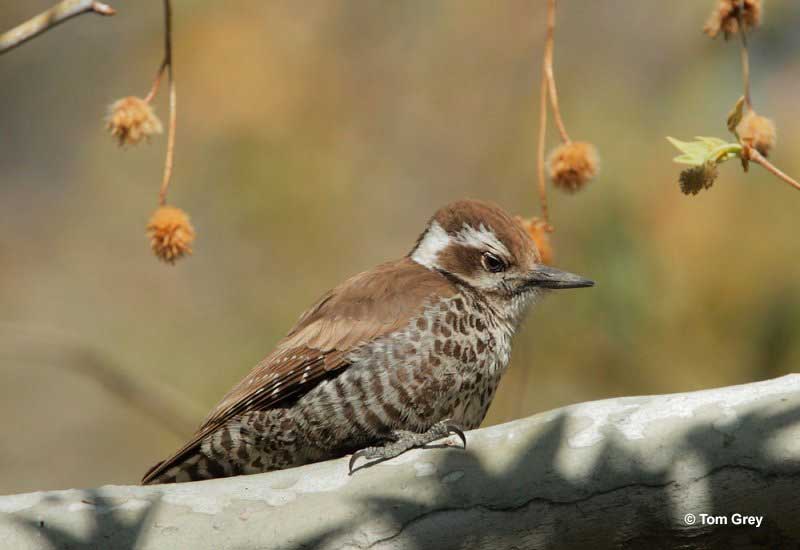
The Arizona Woodpecker is named after the main place where it occurs in the USA. In reality, most Arizona Woodpeckers actually live in montane woodlands of western Mexico. However, since they also range into the mountains of southeastern Arizona, they ended up being named “Arizona Woodpeckers.”
Historically, this species was known as the “Strickland’s Woodpecker”. However, when true “Stricklands Woodpeckers” of central Mexico were recognized as a species, the “Arizona Woodpecker” was officially named.
We see pairs of these uncommon woodpeckers foraging on their own and with mixed flocks. They prefer montane oak woodlands and spend a lot of their time pecking into and hitching up oak trees.
Ash-Throated Flycatcher
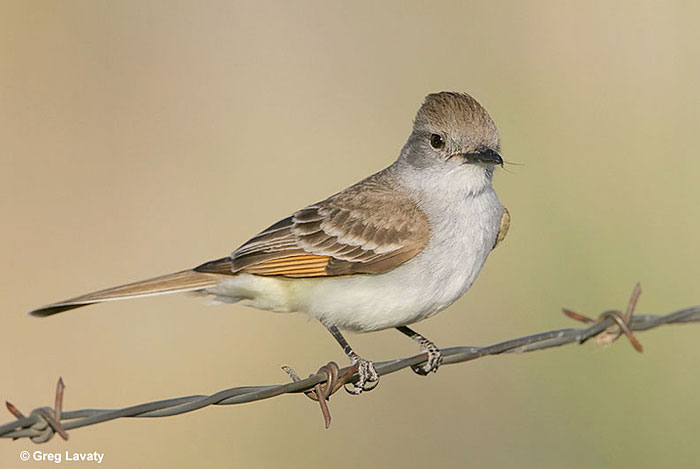
The Ash-throated Flycatcher got its name from one of its most characteristic features. This bird has a pale, ash-colored throat that helps to set it apart from the similar Great-crested Flycatcher, and the Dusky-capped Flycatcher.
However, since Brown-crested Flycatchers and Nutting’s Flycatchers also have pale gray throats, it’s best to identify these birds by range, tail pattern, and voice.
In many parts of western North America, Ash-throated Flycatchers are the common crested flycatcher species with a red-brown tail and wings. We often hear their “pip” call as they forage in oak woodlands and other semi-open and arid habitats.
They usually occur in pairs and are pretty easy to see.
Atlantic Puffin
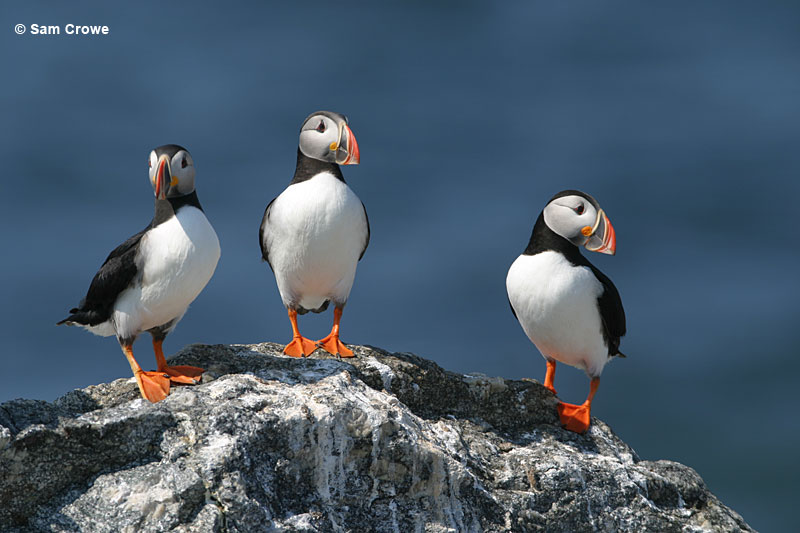
The Atlantic Puffin is named after the ocean where we find them. It’s a good name because while there are two other puffin species, both of them are restricted to the Pacific. The Atlantic Puffin is the only puffin species that occurs in eastern North America and western Europe, and is also the best known puffin species.
The “puffin” part of its name may come from an old Celtic word for this bird or also refer to its puffed up appearance.
The name “puffin” is a good one for these fluffy, rotund little birds. In flight, they might also remind you of an American football!
Audubon’s Oriole
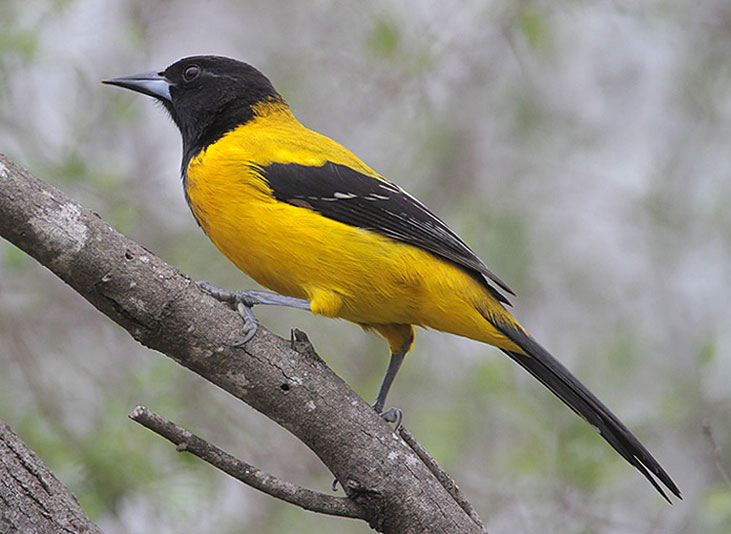
The Audubon’s Oriole is named after one of the best-known ornithologists in North America, John James Audubon. However, until 1983, this oriole species was mostly known as the “Black-headed Oriole”.
This former name was a good one; it describes a good feature to identify it. However, since there is also a Black-headed Oriole that lives in Asia, ornithologists in decided to change the American bird’s name in 1983.
“Audubon’s Oriole” was also given this name to reflect the name of the subspecies that lives in Texas, “audubonii.”
In the USA, we only find this uncommon oriole in subtropical woodlands of southernmost Texas.
Extras: Bird Families Starting With A
- Accentors – small, inconspicuous birds known for their subtle plumage and preference for rocky habitats.
- Akalats – colorful thrush-like birds found mainly in sub-Saharan forests of Africa.
- Albatrosses – majestic seabirds with impressive wingspans.
- Alethes – secretive and skulking birds inhabiting dense forests across Africa.
- Amazons – vibrant parrots native to South America.
- Anis – social and noisy birds often seen in groups foraging for insects and seeds in open habitats.
- Antpeckers – tiny birds that are known for their love for ants, usually pecking them from the ground.
- Antbirds – large family, named after their behavior. Interestingly, antwrens and antshrikes are also considered to be antbirds.
- Antpittas – elusive ground-dwelling birds inhabiting the dense undergrowth of tropical forests.
- Antshrikes – boldly patterned birds found in Central and South America.
- Ant tanagers – colorful songbirds found in Central and South America.
- Antwrens – small and active birds typically found in pairs or family groups in the neotropical forests..
- Apalis – small, insect-eating birds known for their distinctive calls and agile foraging behavior.
- Aracaris – small to medium-sized toucans known for their vivid plumage and specialized fruit-eating habits.
- Argus’s – large, ground-dwelling birds of Southeast Asia, closely related to peacocks.
- Asitys – peculiar birds endemic to Madagascar, known for the males’ striking colors and unique courtship displays.
- Astrapias – brilliantly colored birds of paradise found in the mountains of New Guinea.
- Attilas – small flycatchers found in Central and South America, known for their energetic foraging behavior.
- Auks – stout-bodied seabirds, that resemble penguins in some ways.
- Auklets – small seabirds resembling puffins, often forming large colonies on rocky cliffs along the northern Pacific coasts.
- Avocets – elegant wading birds recognized by their upturned bills and striking black-and-white plumage.
- Awlbills – small birds known for their distinctive straight bills and preference for dense forest habitats.


